Global demand, measured in cargo tonne-kilometers, was up 9% compared to February 2019 and +1.5% compared to January 2021.
All regions except for Latin America saw an improvement in air cargo demand compared to pre-COVID levels and North America and Africa were the strongest performers.
The recovery in global capacity, measured in available cargo tonne-kilometers (ACTKs), stalled owing to new capacity cuts on the passenger side as governments tightened travel restrictions due to the recent spike in COVID-19 cases.
Capacity shrank 14.9% compared to February 2019.
Conditions in the manufacturing sector are robust despite the recent spike in COVID-19 outbreaks. The global manufacturing Purchasing Managers’ Index (PMI) was at 53.9 in February. Results above 50 indicate manufacturing growth versus the prior month.
The new export orders component of the manufacturing PMI – a leading indicator of air cargo demand– picked up compared to January.
Supply chain disruptions and the resulting delivery delays have led to long supplier delivery times – the second longest in the history of the manufacturing PMI.
This typically means manufacturers use air transport, which is quicker, to recover time lost during the production process.
“Air cargo demand is not just recovering from the COVID-19 crisis, it is growing. With demand at 9% above pre-crisis levels (Feb 2019), one of the main challenges for air cargo is finding sufficient capacity.” said Willie Walsh, IATA’s Director General.
“This makes cargo yields a bright spot in an otherwise bleak industry situation. It also highlights the need for clarity on government plans for a safe industry restart.
“Understanding how passenger demand could recover will indicate how much belly capacity will be available for air cargo.
“Being able to efficiently plan that into air cargo operations will be a key element for overall recovery,”



